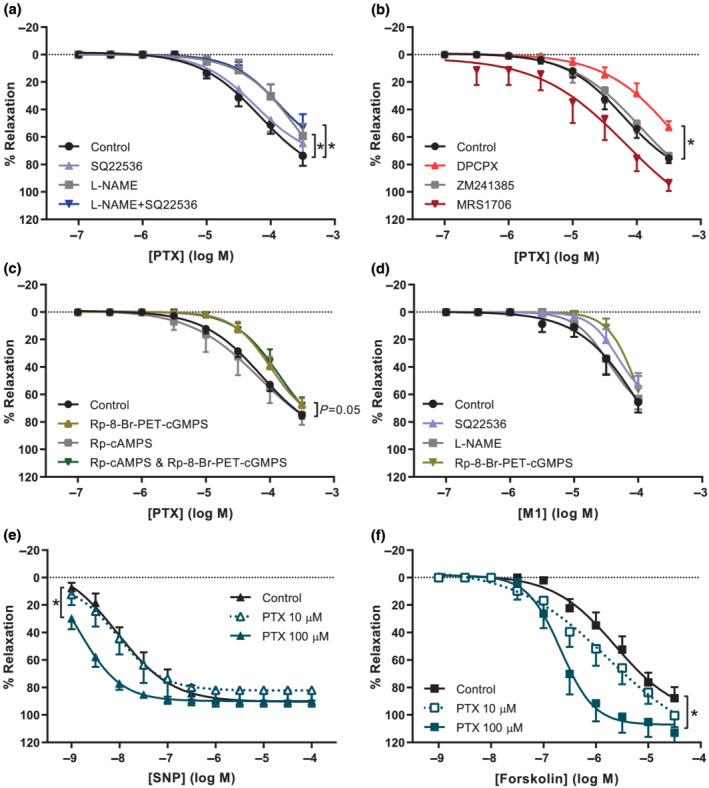FIGURE 2.

Pentoxifylline induces vasodilation and potentiates the NO and adenylyl cyclase pathways in healthy human chorionic plate arteries. Concentration–response curves (CRC) from wire myography experiments depicted as percentage relaxation of pre‐constriction by U46619. Experiments with pentoxifylline (PTX) were performed in the absence or presence of (a) NOS inhibitor L‐NAME, adenylyl cyclase inhibitor SQ22536, or both (n = 8–10), (b) A1 receptor antagonist DPCPX, A2A receptor antagonist ZM241385, A2B receptor antagonist MRS1706 (n = 6–7), or (c) PKG inhibitor Rp‐8‐Br‐PET‐cGMPS, PKA inhibitor Rp‐cAMPS, or both (n= 6–13). (d) CRC of M1 (lisofylline) without antagonists (n = 8) or with SQ22536 (n = 8), L‐NAME (n = 8), or Rp‐8‐Br‐PET‐cGMPS (n = 4). Experiments were also performed with (e) SNP in the absence (n = 9) or presence of 10 μmol·L−1 (n = 7) or 100 μmol·L−1 PTX (n= 6), and (f) forskolin in the absence (n = 8) or presence of 10 μmol·L−1 (n = 7) or 100 μmol·L−1 PTX (n = 7). Curves with antagonist were compared with curves without antagonist (control) using GLM‐RM and depicted as mean ± SE % relaxation of U46619 pre‐constriction. *P < 0.05 versus control.
